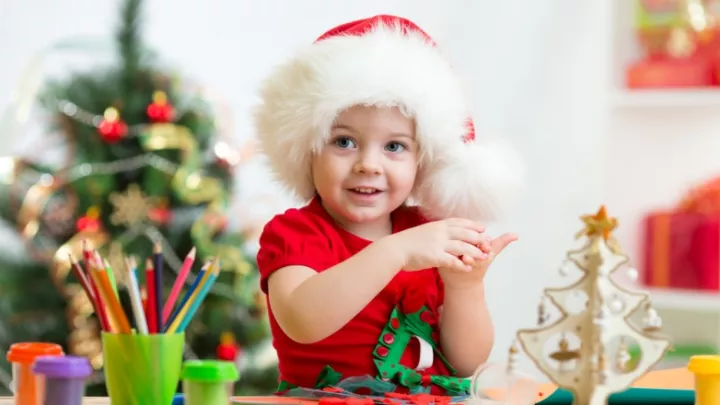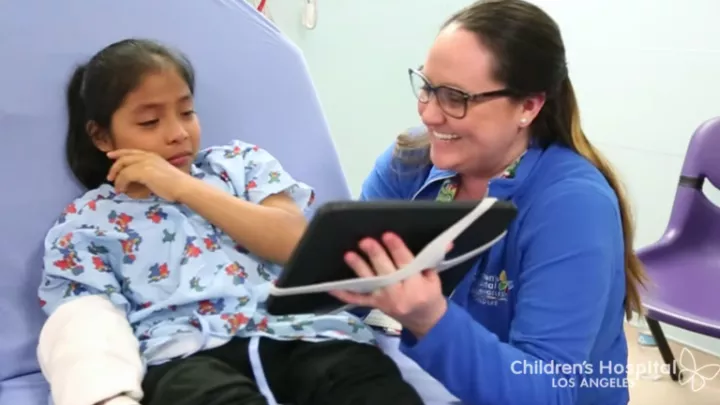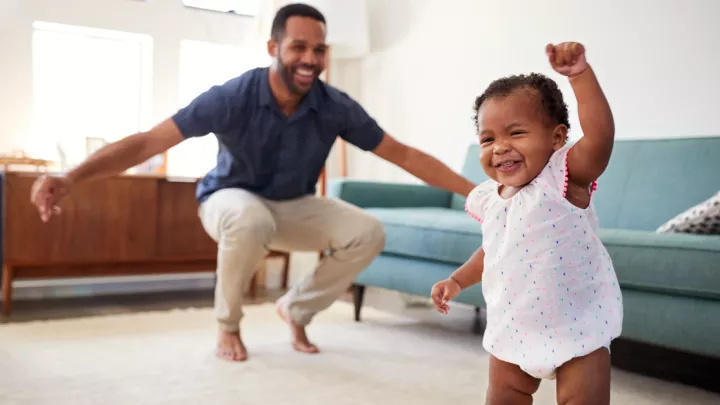Holiday Gift Guide
It’s that time of year when family and friends start to ask what your child is interested in or what gifts they should give. Here’s a list of age-appropriate toys and items that will encourage skills and developmental milestones.
1 to 2 years old
After the first year of life, toddlers are now ready to explore their environment by moving more, showing more interest in objects and people, and showing more independence in their daily activities.

- Books
Reading to your child daily will help with brain development including language, fine motor skills when pointing to items in books, turning pages and paying attention. At this age, toddlers are beginning to recognize familiar people and familiar objects. Books including pictures of family members, names and images of body parts, or images with colors and familiar objects would be ideal to encourage learning and language. - Shape sorters or simple puzzles
Encouraging your child to match simple shapes and colors will promote fine motor, eye-hand coordination and problem-solving skills while he tries to fit the shape into the right shape cut out on the container or puzzle board. - Crayons or doodle boards
It seems early at this age, but this is a great time to begin introducing pre-handwriting activities and encouraging your child to hold a crayon and begin scribbling and drawing horizontal and vertical lines and starting to draw in circular motions. Doodle boards make it easy to erase and try again over and over again. You can start with regular crayons and paper or coloring sheets while talking about the images on the coloring pages. - Standing stations
To encourage lots of sitting and standing, as well as side stepping, a standing play station may give your toddler the motivation to practice repeated sitting, standing and side stepping, which will prepare him for independent walking. These stations are usually a square table top that allows your child to take steps around the table while using their arms to support them if needed. - Push toys
As your toddler begins to feel more comfortable standing and taking a few steps she may be interested in exploring her freedom and pushing a push toy while taking steps as it provides some support as she holds onto the toy with both hands. It is usually recommended to avoid the baby walkers in which the child is seated in a supportive fabric sling type sitting area. Instead opt for the push toys that allows your toddler the freedom to sit, stand, and walk on their own in order to practice their skills. - Sit and Ride toys
Now that your toddler has good upright sitting balance and stronger leg muscles, he can now sit on a seated toy and push himself around using his strong legs. This activity will give him the freedom of movement without requiring the balance required of running.
2 to 3 years old
Welcome to the “terrible twos!” With an increased desire for independence, your 2 to 3 year old is now imitating people around her, showing her emotions, and learning a ton each day.
- Books
Continue to read to your child daily to continue to help with brain development including language, fine motor skills when pointing to items in books and attention. At this age, children are beginning to recognize items and say words, sing nursery rhymes, and talk about the characters in the books. Books including simple stories, colors, numbers, and nursery rhymes would be ideal to encourage learning and language. - Crayons or doodle Boards
Using a doodle board or a white board allows your child to practice, practice, practice by erasing and trying over and over again. At this age, your child may begin imitating vertical, horizontal and circles while drawing. Using a variety of materials such as paints or chalk may increase interest and will continue to work on eye-hand coordination and grasp. - Pretend play
Gifts including pretend play characters will encourage pretend play such as doll houses, fire engines with removable characters, pretend household items for feeding, cooking, building. At this age, children are imitating adults around them and are interested in learning day-to-day activities such as taking care of children, working and taking care of the home. - Shape sorters or simple puzzles
Shape sorters can grow with your child as your child ages and learns new skills. At this age, your child can practice saying colors, shapes and recognize and manipulate more complicated shape patterns. Encouraging your child to match simple shapes and colors will promote fine motor, eye-hand coordination and problem solving skills while he tries to fit the shape into the right shape cut out on the container or puzzle board. - Simple turn taking board games
Your child is now becoming more social and interested in playing with others. Children are social learners and now is the time to teach and practice turn taking and following simple rules of board games. - Sports balls
It’s a fun time to begin practicing throwing, catching, kicking with soccer, baseball or basketballs! At this age your child is learning eye-hand coordination and eye-foot coordination and an introduction to sports is a great way introduce those skills.
3 to 4 years old
“Magic years” where their imagination expands and learning takes off.
- Books
Language is rapidly expanding. They can now have conversations about stories and things that interest them. They can remember stories you’ve read to them and anticipate events in the stories. - Crayons or pencils
Encouraging your child to write and draw will prepare them for their future in school. At this age, we can start to expect children to draw squares, triangles, simple people/figures. They can also start to draw pictures of the stories they come up with. - Fantasy play
At this age your child’s imagination is taking off and encouraging her to think and learn using her creative imagination. Having a variety of dress up items such as costumes and interesting clothing items, play centers (kitchen, woodshop), kinetic sand, blocks or buildable items so they can create their own stories. - Tricycle
Your child may be ready to get on a tricycle and explore the neighborhood with you. At this age, your child may have enough leg and core strength to self-propel a tricycle. Remember, each child is different so you may feel your child has been ready for a tricycle before they turn 3. - Three-wheeled scooter: With increased ability to balance and coordinate their movements, your child may be ready for a three-wheeled scooter. These scooters give more stability with less risk of falling than the two-wheeled scooters but can give them practice with balance as well as increase strength in their legs. Don’t forget to put a well-fitted helmet on your child! Find out how to fit your child with a helmet here:
4 to 5 years old
- Books
Your child can now understand and remember more detailed stories. This is a great time to begin learning about different interests including animals, the world and social situations. - Handwriting
A notebook with blank or lined pages may be perfect for your child as they are learning to print letters and can draw more and more shapes - Letter recognition toys
Starting to recognize letters using puzzles, games and matching activities will help your child with reading and prepare them for school. - Crafts
Making crafts including coloring, cutting with child scissors, gluing and lacing will encourage eye-hand coordination as well as open their imagination. A benefit is the confidence and pride your child will take in making something special for themselves or others. - Games
You have likely been playing games with your child for months now but your child may now be more interested in playing with friends or siblings with more rules and strategy. Kids this age are learning to play with others. Gifts including simple board games as well as outdoor games with same aged peers will encourage socialization and friendship building. - Bicycle
Your child might be ready for his first real bike! All kids develop at his/her own pace so you may have already tried bike riding. It’s important to acknowledge your child’s abilities and introduce bicycles when you feel you child is ready. Training wheels are a great start to gain confidence. Don’t forget to purchase a helmet!


